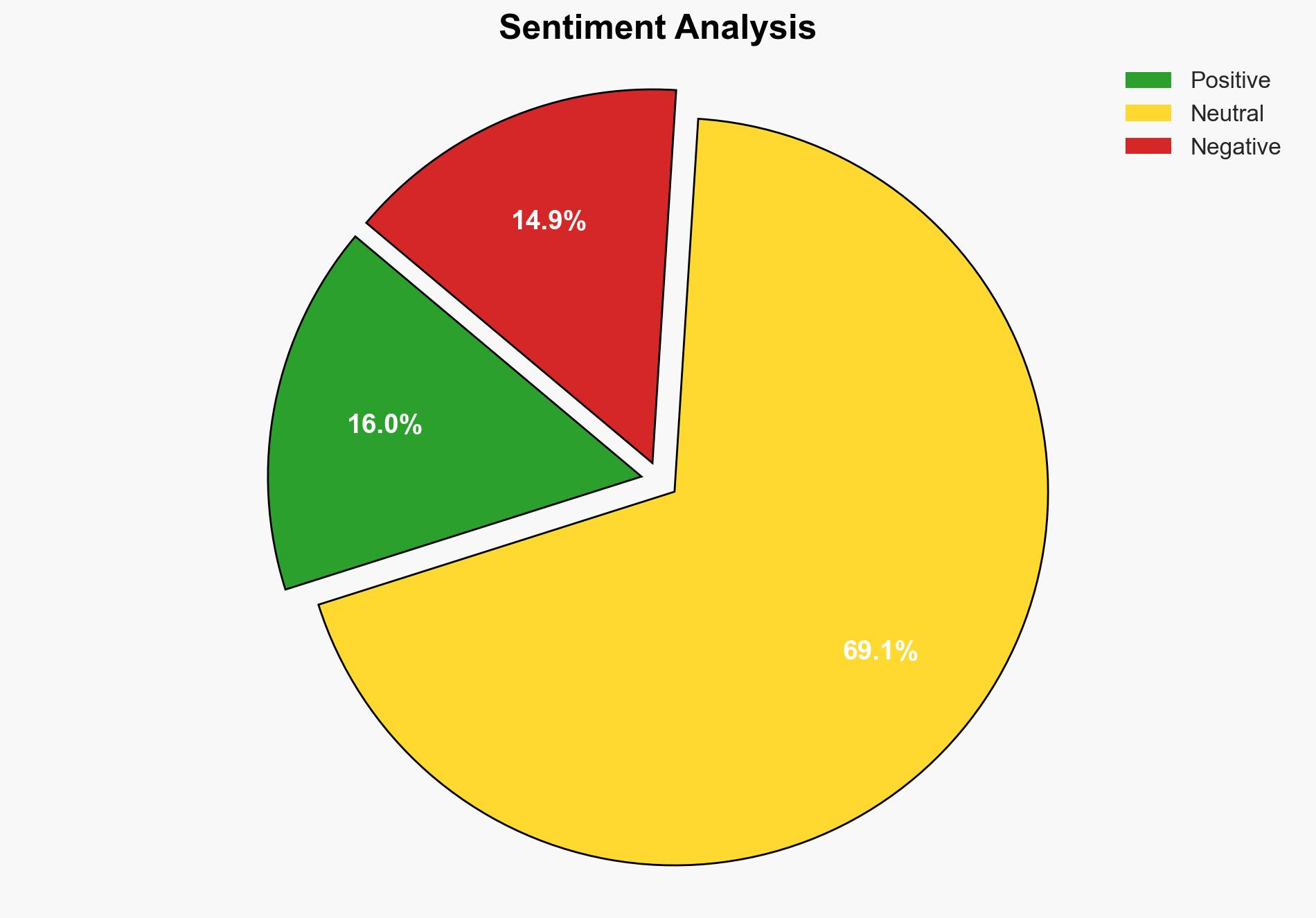Java Maven OWASP Dependency-Check Example – Javacodegeeks.com
Published on: 2025-03-19
Intelligence Report: Java Maven OWASP Dependency-Check Example – Javacodegeeks.com
1. BLUF (Bottom Line Up Front)
The integration of OWASP Dependency-Check with Java Maven projects is crucial for identifying and mitigating security vulnerabilities in software dependencies. This tool enhances software security by scanning project dependencies against the National Vulnerability Database (NVD), generating reports, and allowing developers to address potential threats proactively. The strategic implementation of this tool can significantly reduce the risk of data breaches and unauthorized access.
2. Detailed Analysis
The following structured analytic techniques have been applied for this analysis:
General Analysis
The OWASP Dependency-Check is an open-source tool designed to identify vulnerabilities in project dependencies. It operates by scanning dependencies and matching them against known vulnerabilities in the NVD. The tool supports multiple build systems, including Maven, and can be integrated into development workflows to automate vulnerability scanning. By generating reports in various formats, developers can assess the severity of vulnerabilities and prioritize security fixes. The tool’s integration into CI/CD pipelines ensures continuous security monitoring, which is essential for maintaining a secure software supply chain.
3. Implications and Strategic Risks
The primary risk associated with not using OWASP Dependency-Check is the potential for security vulnerabilities to remain undetected in software dependencies. This can lead to severe consequences, such as data breaches, unauthorized access, and malware injection. The tool’s ability to identify vulnerabilities like CVE-2021-44228 (Log4Shell) underscores its importance in preventing critical security incidents. Failure to implement such security measures can result in significant national security risks, regional instability, and economic impacts due to compromised systems.
4. Recommendations and Outlook
Recommendations:
- Integrate OWASP Dependency-Check into all Java Maven projects to ensure continuous monitoring of software dependencies.
- Establish organizational policies mandating regular vulnerability scans and timely remediation of identified issues.
- Enhance developer training on security best practices and the use of tools like OWASP Dependency-Check.
Outlook:
In the best-case scenario, widespread adoption of OWASP Dependency-Check will lead to a significant reduction in software vulnerabilities and security incidents. In the worst-case scenario, failure to adopt such tools could result in increased cyber threats and compromised systems. The most likely outcome is a gradual increase in the use of dependency-checking tools as awareness of their importance grows.
5. Key Individuals and Entities
The report does not mention specific individuals but emphasizes the role of developers and organizations in implementing OWASP Dependency-Check to enhance software security. The tool’s development by OWASP and its integration with the National Vulnerability Database are critical components of its effectiveness.





